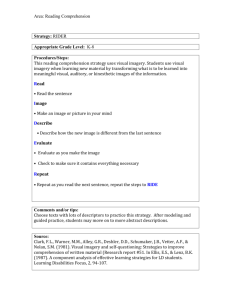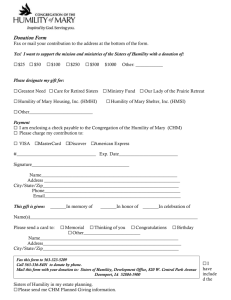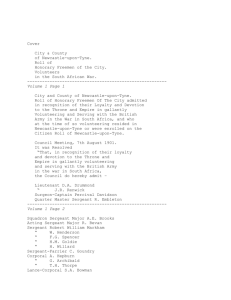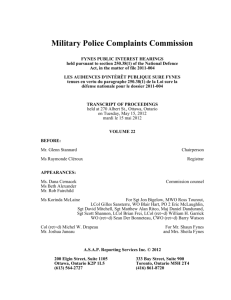Primary Guided Reading Lesson Plan
advertisement
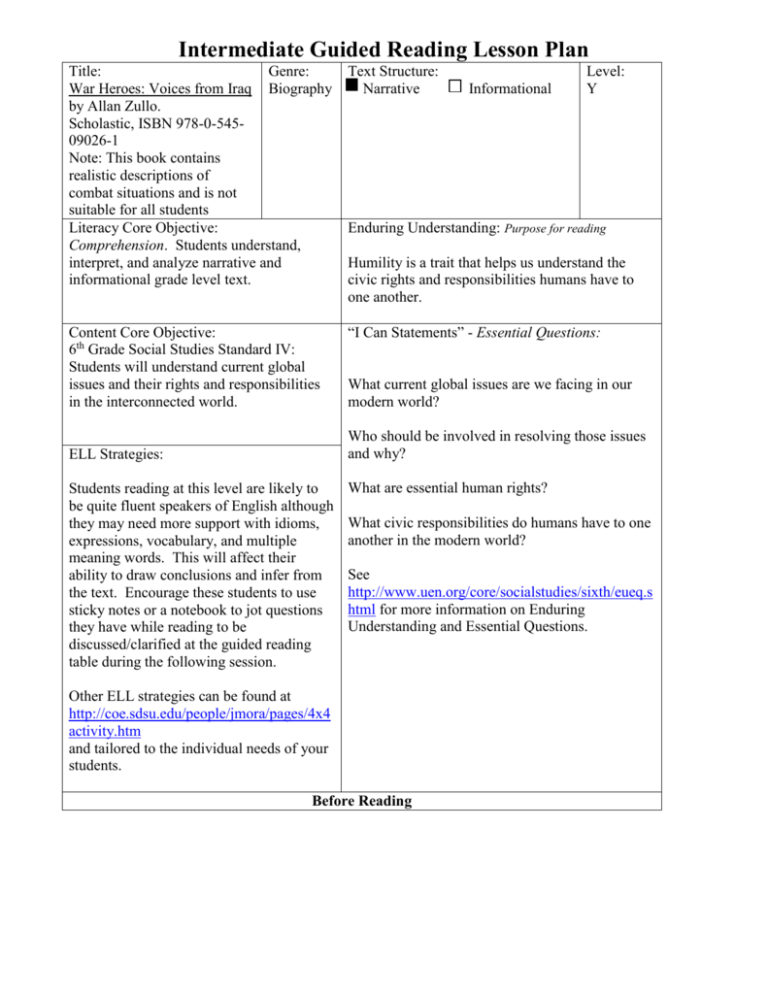
Intermediate Guided Reading Lesson Plan Title: Genre: War Heroes: Voices from Iraq Biography by Allan Zullo. Scholastic, ISBN 978-0-54509026-1 Note: This book contains realistic descriptions of combat situations and is not suitable for all students Literacy Core Objective: Comprehension. Students understand, interpret, and analyze narrative and informational grade level text. Text Structure: Narrative Content Core Objective: 6th Grade Social Studies Standard IV: Students will understand current global issues and their rights and responsibilities in the interconnected world. “I Can Statements” - Essential Questions: Informational Level: Y Enduring Understanding: Purpose for reading Humility is a trait that helps us understand the civic rights and responsibilities humans have to one another. What current global issues are we facing in our modern world? Who should be involved in resolving those issues and why? ELL Strategies: Students reading at this level are likely to be quite fluent speakers of English although they may need more support with idioms, expressions, vocabulary, and multiple meaning words. This will affect their ability to draw conclusions and infer from the text. Encourage these students to use sticky notes or a notebook to jot questions they have while reading to be discussed/clarified at the guided reading table during the following session. What are essential human rights? What civic responsibilities do humans have to one another in the modern world? See http://www.uen.org/core/socialstudies/sixth/eueq.s html for more information on Enduring Understanding and Essential Questions. Other ELL strategies can be found at http://coe.sdsu.edu/people/jmora/pages/4x4 activity.htm and tailored to the individual needs of your students. Before Reading Vocabulary: Tier 2 Vocabulary Words: High frequency words that are found across a variety of domains. Provide student-friendly explanations that tell what a word means in everyday connected language. For more information, please see Bringing Words to Life by Beck & McKeyown. fanatic deliberate allies dictator dismantled insurgents cache bedlam percussion militants Activate/Build Prior Knowledge: Shared reading of Author’s Note Explain graphic organizer Comprehension Strategy: Dealing with unknown words – there are a lot of military terms and Middle Eastern place names in this book. Show the glossary. Remind students that they can use the context to figure out some of these words. For the average reader it is probably not important to keep track of the difference between an M4 and an M16, the reader will be able to use the context of the sentence to figure out that they are both types of guns. For students with more interest in the military details of the book, they can use the glossary. During Reading Using appropriate Guided reading strategies, students will be reading at their own pace and teachers will be listening to students read, monitoring, giving feedback, taking anecdotal notes and running records. Attend to Comprehension Within, Beyond, & About the text: After Reading Discussion questions: As the U.S. involvement in Iraq is controversial, it would be prudent for the teacher to show balance in the discussions. Help students process what they are reading, some students may be more sensitive to the violence. Discuss examples students have written on their graphic organizers. Great examples of foreboding in the book, beginning on page 5. Why do you think Montoya insisted on being a “grunt”? (p. 8) What are your thoughts on Montoya’s journal entry on page 10? Why do you think they are called leathernecks? (p. 13) No one follows Workman up the stairs the first time, were you expecting that? (p. 23) What does “cut down” mean? (p.27) What do you think about the line, “As in all wars, life and death is often a matter of good fortune or bad luck” on page 38? On page 51 Mike compares his feelings in battle to the adrenaline rush he used to feel running out on the football field. Do you think that contributes to his willingness to run into the fire? What does the expression “had my bell rung,” mean? (p. 52) What was your reaction to the things Marco’s teachers said about him on page 62? What are “spider holes”? (p. 67) In Martinez’s story he mentions that the battle has gone on for three hours (p. 73). Does it seem like that long when you read about it? Can you imagine the toll that would take? What do you think it would be like to have a metal splinter in your head for a month like Rubio (p. 87)? On page 90 we find out that the gunner is the only person in the back of the truck who gets to see where they are going. He’s also a target. Would you rather be the gunner or one of the troops inside? On page 103 we learn that 59 members of Lima company earn Purple Hearts (which means that they were injured in battle) and that 23 of those people earned it “posthumously”. What percent is that? What is your reaction to Chiarini sparing the life of the insurgent on page 111? On page 115 what do you learn about the phrase “riding shotgun”? Pages 117-118 illustrate the idea of triage, which is a word that students may hear in other media. Discuss. Page 122 provides a good opportunity to again clarify the role of the U.S. – working with the Iraqis against the insurgents. Do you expect the reaction that Hill and her colleagues have on page 130 to Hill’s injury? How does the phrase “fake it till you make it” relate to Malmberg on page 138? Attend to Comprehension Within, Beyond, & About the text: Content Core Integration:(Science, Soc. St., Math, etc.) Assessment: Activities: Completion of the organizer assignment. There is a lesson called “Writing Free Verse in the “Voice” of Cesar Chavez” available at http://www.readwritethink.org/lessons/lesson_vie w.asp?id=777. If they have done this lesson first, the structure of writing a free verse poem in another person’s voice could be applied to this book, allowing students to pick one of the soldiers in the book and writing a free verse poem in their voice. *Not all activities will be done in each lesson. Some lessons may take multiple days to complete. However, all students should be reading each time you meet. Name: _______________________ War Heroes: Voices from Iraq The author states, “(a)ll ten persons profiled in this book shared a common trait – humility.” As you read, look for examples of each person’s humility and complete the following table. Include page numbers and direct quotes. Person Sergeant Scott Montoya Corporal Jeremiah Workman Staff Sergeant Daniel Bogart Specialist Jason Mike Corporal Marco Martinez Hospital Corpsman Second Class Juan Rubio Lance Corporal Mark Camp Hospital Corpsman Third Class Joshua Chiarini Chief Warrant Officer Lori Hill Staff Sergeant Chad Malmberg Example of Humility




